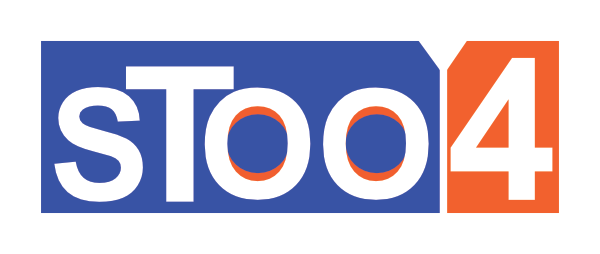| [](https://hub.ufzg.hr/uploads/images/gallery/2024-09/logo-stoo2-1-no.png) | **Teaching (Today for) Tomorrow:** **Bridging the Gap between the Classroom and Reality** 3rd International Scientific and Art Conference Faculty of Teacher Education, University of Zagreb in cooperation with the Croatian Academy of Sciences and Arts |
| ##### **Snježana Dubovicki, Anita Kostanjčar** *Faculty of education, University of Osijek, Croatia* *sdubovicki@gmail.com* | |
| **Section - Education for personal and professional development** | **Paper number: 3** | **Category: Original scientific paper** |
| ##### **Abstract** |
| The changes that are taking place at the European and global levels and in national educational policies affect adult education systems, the professional status of andragogues, but also the determination of the competencies they need. We can say that today's conditions of adult education are far different from those that prevailed in the last decade. In the last ten years, lifelong education has become imperative for success and one of the conditions for survival on the global scene. Today, when the target group is no longer just students in the immediate vicinity of higher education institutions, but citizens from all over the world, we need to think about teaching in foreign languages, teaching in an online environment, as well as about current and potential methods and procedures that will creatively contribute to the competences of individuals and their competitiveness on the labor market. With all the changing components in education and teaching at all levels, the only constant is learning and acquisition of knowledge throughout life. The concept of lifelong education pushes the boundaries of education that does not end with formal education and enables career changes, as well as changes in profession and qualifications, even after formal education in adulthood, and the acquisition of additional competencies. This paper presents creative andragogical methods that have emerged from the world of entrepreneurship, and have gradually entered the field of education and teaching, particularly among the younger population who have just graduated from the formal education system but wish to retrain or further educate and improve their skills in their profession to enhance their competitiveness in the open labour market. |
| ***Key words:*** |
| Andragogy; Lifelong education; Competences; Creativity; Teaching methods. |
| Teaching methods | Teaching method | Methodical procedure | Authors |
| Verbal methods | Method of oral presentation | Narration | Cindrić et al. (2010) |
| Reasoning | Andrilović et al. (1985) | ||
| Explanation | Axinte et al. (2010) | ||
| Reporting | Vizek Vidović & Vlahović Štetić (2007) | ||
| The conversation method | Brainstorming | Cindrić et al. (2010) | |
| Discussion (polemic, debate, discussion) | Sharma (2006); Vizek Vidović & Vlahović Štetić (2007), Benge Kletzien & Cota Bekavac (2005) | ||
| Free conversation | Andrilović et al. (1985) | ||
| Development conversation | Axinte et al. (2010) | ||
| Catechetical conversation | Vizek-Vidović & Vlahović Štetić (2007) | ||
| Method of reading and working on the text | Related or reproductive written works - copying, labeling, typing | Cindrić et al. (2010) | |
| Semi-connected or semi-free written assignments - answering questions, dictation | Sharma (2006) | ||
| Independent written works - composition, reformulation | Andrilović et al. (1985) | ||
| Visual methods | Drawing method | Drawing graphic signs (voltmeter, topographic and cartographic signs) | Spajić-Vrkaš et al. (2004) |
| Drawing graphic symbols - abstract, ambiguous (coat of arms, sword...) | |||
| Geometric drawing | |||
| Graphical representation of quantitative relationships | |||
| Schematic drawing of the subject | |||
| Schematic representation of the process | |||
| Drawing based on observation and representation of natural objects | |||
| The method of illustrative works | Concretization of abstraction | ||
| Illustrating the plot | |||
| Praxeological methods | Demonstration method | Demonstrating static objects | The Pole (1984) |
| Demonstrating dynamic natural phenomena | Vizek-Vidović & Vlahović Štetić (2007) | ||
| Method of practical works | Handiwork | Matijević (2009) | |
| Machine work | Andrilović et al. (1985) | ||
| Creative teaching methods: | Game method | Method of reverse learning process - group puzzle | Axinte et al. (2010) |
| Role playing - role-play | Đurić (2009) | ||
| Simulation | Alfirev & Rajaković (2002) | ||
| Picasso painting | artistic creation | Dubovicki (2013) | |
| Morphological analysis | scientific creation | Dubovicki (2016) | |
| Future workshop | Work - technical creation | Bognar, 2005; Bognar & Matijević (2005) | |
| Design thinking | Martin (2009); Starkey & Tempest (2009); Glen et al. (2014); Matthews & Wrigley (2017); Waidelich et al. (2018); Pap et al. (2019); Charles (2022); Rupčić, 2022 | ||
| PAR method | Kunt (2020); Korkut & Kopal (2018); | ||
| SCAMPER method | Korkut & Kopal (2018); Nikolić (2019); Solomon (2003) |